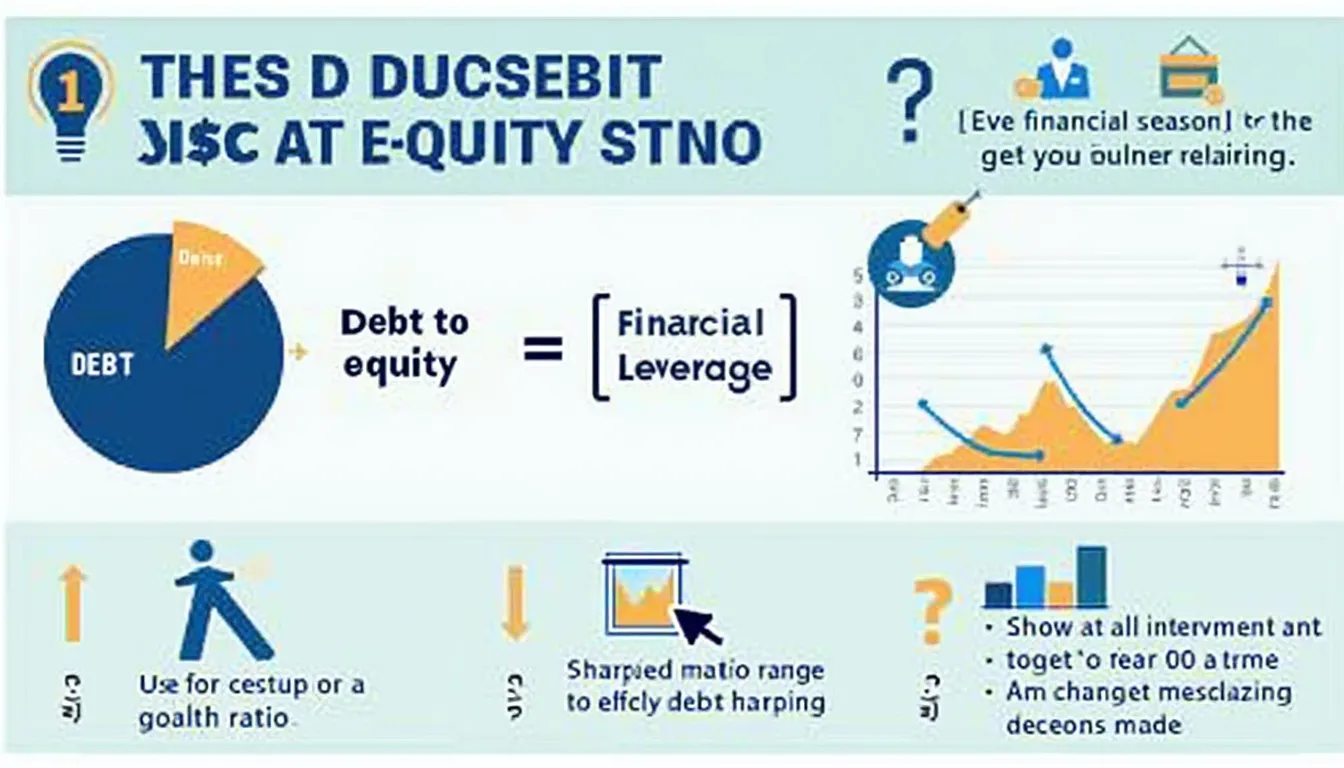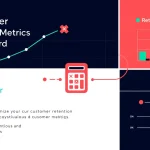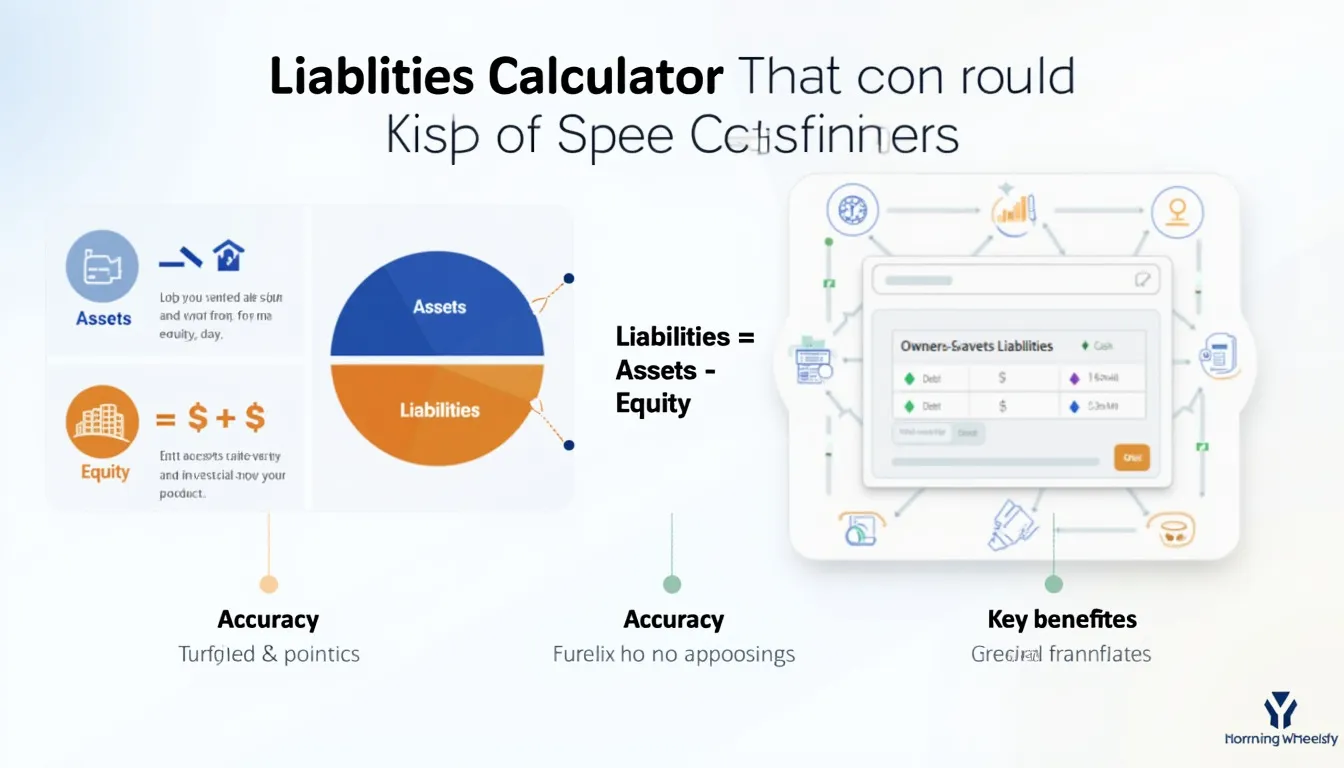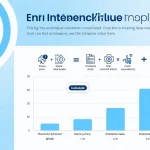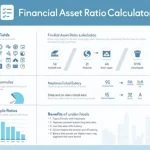Debt to Equity Ratio Calculator
Is this tool helpful?
How to use the tool
- Type total liabilities. Example inputs: 310 000 or 42 500.
- Type total equity. Example inputs: 155 000 or 85 000.
- Press “Calculate”. The tool divides liabilities by equity and shows the ratio to two decimals.
- Read the interpretation. You see whether leverage is low (<1), balanced (=1) or high (>1).
Formula used
$$ \text{Debt-to-Equity Ratio} = rac{\text{Total Liabilities}}{\text{Total Equity}} $$
Example calculations
- Liabilities = 310 000, Equity = 155 000 → $$ rac{310\,000}{155\,000}=2.00$$
- Liabilities = 42 500, Equity = 85 000 → $$ rac{42\,500}{85\,000}=0.50$$
Quick-Facts
- Standard formula: Liabilities ÷ Equity (Investopedia, https://www.investopedia.com/terms/d/debtequityratio.asp).
- Median D/E for U.S. tech sector: 0.37 (Damodaran, https://pages.stern.nyu.edu/~adamodar/New_Home_Page/datafile/dbtfund.html, 2023).
- D/E above 2.0 often flags elevated default risk (S&P Global Ratings, 2022 Corporate Criteria).
- SEC rule 17 CFR 240.13a-13 requires public companies to report quarterly figures (SEC, 2023).
FAQs
What does a D/E ratio below 1 mean?
You finance operations mainly with equity, signalling lower fixed repayment pressure (Investopedia, https://www.investopedia.com/terms/d/debtequityratio.asp).
Is a negative D/E possible?
Yes. Negative equity—often due to accumulated losses—yields a negative ratio and indicates distress (CFI, https://corporatefinanceinstitute.com, 2022).
How often should you recalculate D/E?
Update every quarter for listed firms, aligning with mandatory 10-Q filings (SEC, 2023).
What ratio is “high” in capital-intensive industries?
Utilities and telecoms tolerate ratios up to 2.5 because stable cash flows cover debt service (Moody’s Sector Report, 2021).
Does the formula use market or book values?
The calculator uses book values from the balance sheet; market values suit valuation models like CAPM (IAS 1, 2020).
How does D/E differ from the debt ratio?
D/E compares debt to equity; the debt ratio compares debt to total assets, giving a broader leverage view (Investopedia, URL as above).
Can I apply this to personal finance?
Replace liabilities with personal debt and equity with net worth to gauge household leverage (CFPB Consumer Guide, 2022).
Why does the tool show two decimal places?
Rounding standardizes presentations and eases comparison across periods (FASB ASC 235-10-50-4, 2021).
Important Disclaimer
The calculations, results, and content provided by our tools are not guaranteed to be accurate, complete, or reliable. Users are responsible for verifying and interpreting the results. Our content and tools may contain errors, biases, or inconsistencies. Do not enter personal data, sensitive information, or personally identifiable information in our web forms or tools. Such data entry violates our terms of service and may result in unauthorized disclosure to third parties. We reserve the right to save inputs and outputs from our tools for the purposes of error debugging, bias identification, and performance improvement. External companies providing AI models used in our tools may also save and process data in accordance with their own policies. By using our tools, you consent to this data collection and processing. We reserve the right to limit the usage of our tools based on current usability factors.
